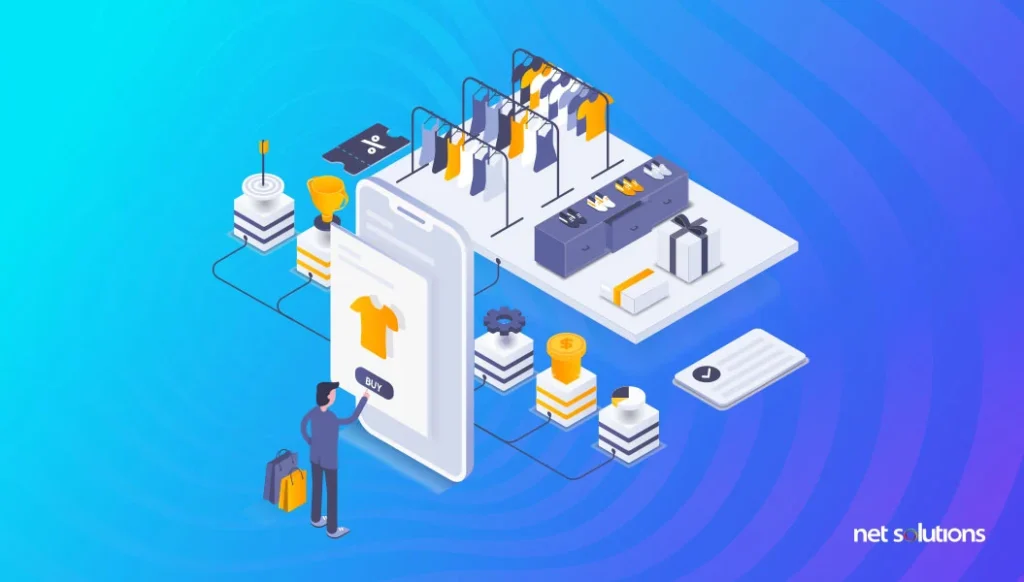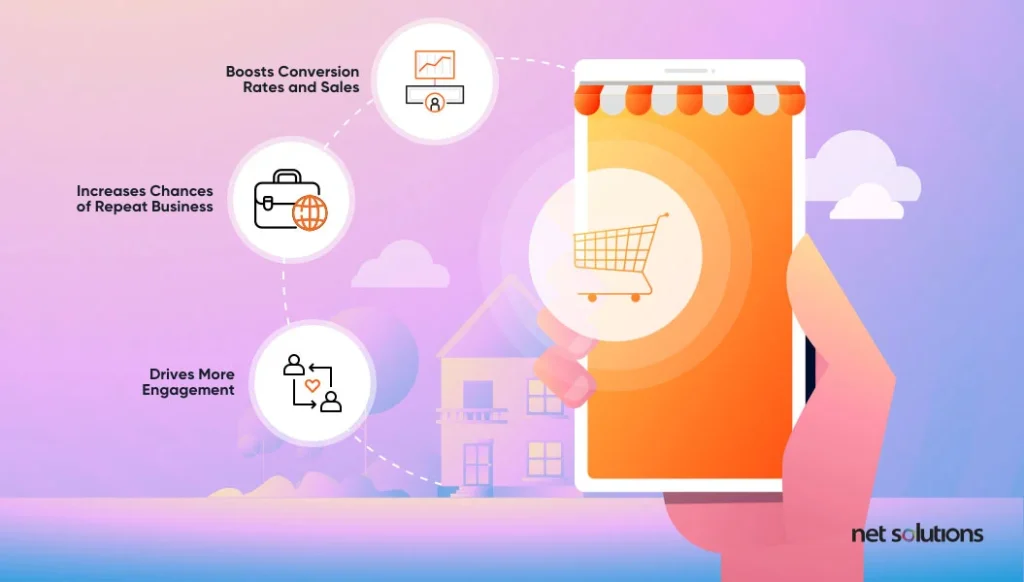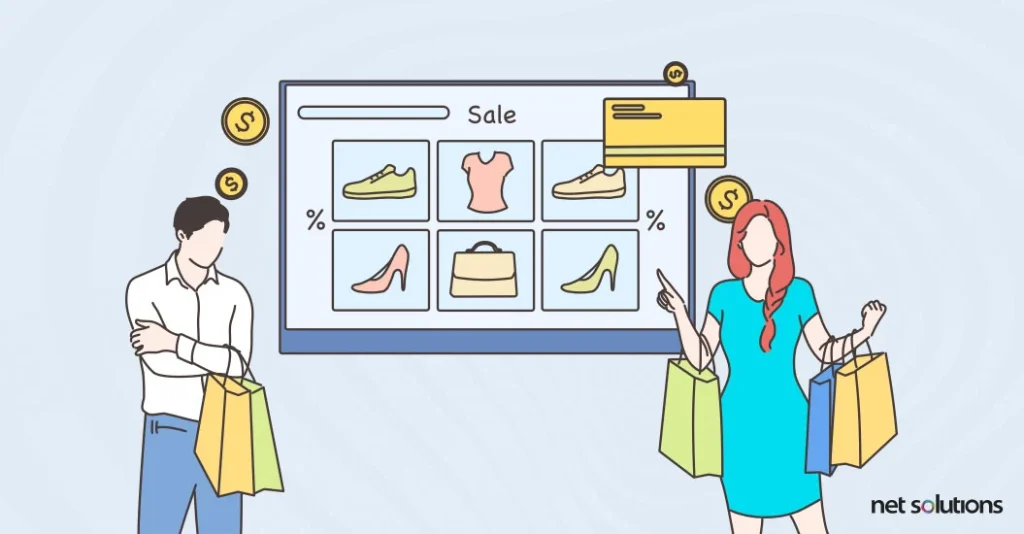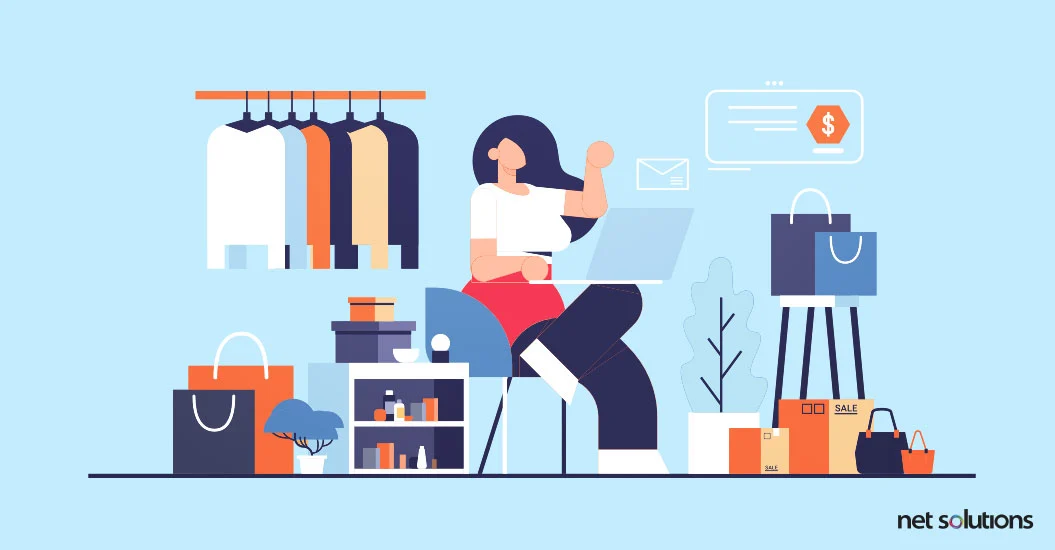How your eCommerce or online retail site performs for visitors is critical to your brand’s success. A strong user experience is tantamount to a strong online sales game; eCommerce personalization is part of that game. Find out more about this must-have tactic for any online retailer below.
What Is eCommerce Personalization?

eCommerce personalization refers to how you personalize the content and offers on your eCommerce website for each visitor.
One example of this personalization that many people are familiar with is Netflix. When you open your individual Netflix account, you’re greeted with a high level of personalization. The app provides lists of content recommended based on what you’ve already watched and how you interacted with that content. If you watched all the seasons of a romcom sitcom, for example, you’re going to get a row of sitcoms along with romcoms and similar content recommended to you.
Another example most people have experienced is Amazon. If you log into your Amazon account, you can quickly see items you’ve recently viewed and purchased, but you also get recommendations for items you might like based on your previous shopping and viewing habits. Amazon goes so far as to build some of this into its search to ensure the items that show up when you enter keywords are as relevant as possible to your needs.
The Benefits of eCommerce Personalization

Personalization is powerful. It helps customers feel like you’re really in tune with their needs, which can increase the likelihood they’ll make a purchase. And with so many sites committed to personalization, it’s not really an option anymore. More than 70% of consumers say they feel frustrated when a site is too impersonal, so it’s important to make some effort here.
Here are some other benefits of eCommerce personalization:
- Boosts conversion rates and sales: Close to 50% of consumers say they’ll click away and check Amazon if the site they’re on doesn’t provide appropriate recommendations, so getting personalization right helps you keep the customer. Plus, around 80% of consumers won’t shop with a company at all if there’s no personalization present.
- Increases chances of repeat business: More than 90% of consumers say they’re likely to shop again with a brand that offers personalization.
- Drives more engagement: More than 70% of shoppers in America say they will only engage with marketing and other messaging that’s personalized at this point.
3 Types of Personalization to Employ

So, how do you personalize your eCommerce content and product recommendations? It requires some technology — machine learning and AI play an important role in eCommerce personalization. Luckily, you can deploy ready-made eCommerce solutions to help improve personalization on your site as long as you’re following the right tactics. Here are three personalization tactics you might want to try.
- Recommendation via Semantic Understanding
This is one of the simplest forms of personalization, but it can be especially powerful. Netflix uses this type of personalization to great success, and it’s based on the fact that some content or products are similar to others. For example, if you watch a couple of shows appropriate for lower elementary audiences on Netflix, suddenly it’s recommending cartoons and other educational content for children. Another example of semantic understanding can be seen on music streaming services such as Spotify. If you listen to and like a couple of songs with “dragon” in the title, you might notice other songs with that word in the title popping up.
This premise works on eCommerce sites too. If someone searches “red shirts” on your site and browses a few products meeting that description, you can automatically suggest other red shirts to help them on their search. Someone who buys a new science fiction book might trigger recommendations for other best sellers in the genre, and a new parent searching for baby items might appreciate having other baby items recommended.
Semantic recommendations can be set up in a number of ways, including:
- Show items with the same tags or keywords as the item someone looks at or buys.
- Show items from the categories people are browsing.
- Show items other people purchased after looking at or purchasing the item the shopper is looking at.
- Segmenting Your Audience and Providing Targeted Messaging
Segmenting your audience can help personalize the experience with your brand. This is especially true for marketing messages such as emails.
Segmenting is dividing your audience based on certain demographics or behavioral traits. For example, if you’re an eCommerce business that sells dorm room furniture, you have several audiences: College students, parents, and potentially the schools themselves. How you market and engage with each audience should be different, so your list must be segmented.
Geolocation is another good example of a segmentation opportunity. An eCommerce fashion retailer selling clothes nationwide can use geolocation to provide more relevant options for shoppers. Basic AI protocols can recognize a shopper’s IP address and associate that with a climate and other clothing needs relevant to a region. Then, it can ensure the right products are recommended. That way, you’re not harking puff coats to someone on the coast of Florida or pushing yellow polka dot bikinis on consumers shopping from Minnesota in December.
- 1:1 Personalization Based on a Customer Profile
A customer profile lets you get the highest level of eCommerce personalization. When someone logs into your site, you can gather a great deal of data to personalize their experience in the future. That can include:
- What they look at on your site and how they interact with it — do they use favorites buttons, spend more time on certain pages or click on certain links?
- What they put in their carts, save for later or buy.
- How they behave online and what seems to interest them.
More than 80% of consumers are willing to share this data type with brands they trust in exchange for a more personalized experience. And as many as 90% of consumers say they’re willing to share such data if they can get an easier or less expensive experience with a brand.
When you have a customer profile, you can personalize the shopping experience just for that person — from offers targeted to their needs to product recommendations that only apply to their situation. For example, if someone just bought a small kitchen appliance, you can recommend the specific accessories that go with that item — down to color and model number.

Start Working on Personalization Today
Net Solutions can help you design eCommerce sites and apps that delight users and boost your bottom line. Our digital commerce team brings online retail experience and tech talent to the table to help you improve ecommerce website design and build solutions that drive brand awareness, customer loyalty and higher conversion rates, and that includes eCommerce personalization. For more information about how we can help you connect with consumers, reach out for a consultation today.
SHARE THIS POST
Table of Contents
Related Services
Related Resources
- eCommerce App Development Cost: Budgeting In-Depth Guide
- 13 Differences Between B2B and B2C eCommerce Websites
- Top 10 eCommerce Challenges and Easy Ways to Overcome Them
- 3 Types of eCommerce Business Models That Work in 2024
- eCommerce for Business: Is eCommerce Applicable for All Business Types
- eCommerce Customer Journey Mapping - The Secret to Higher Conversion Rates
- What is Headless Commerce? The Ultimate Guide
- Top 15 eCommerce KPIs to Track the Performance of Your Online Business
- What is Adobe Commerce (Magento)? Everything You Need to Know in 2024
- Why Your Business Needs a Mobile eCommerce App
- Omnichannel Retail Strategy: A Comprehensive Guide
- Omnichannel vs Multichannel Retailing: The Complete Guide
- What is eCommerce Order Fulfilment? (And 6 Steps to Improve the Process)
- PCI Compliance: Everything You Need To Know
- 12 Essential Factors for Choosing the Best eCommerce Platform
- The Ultimate Guide to Product Information Management (PIM) Systems for Ecommerce
- What is a Product Recommendation Engine (And How it Helps Boost Sales)
- eCommerce Replatforming: Challenges, Benefits, and Best Practices
- The Ultimate Guide to eCommerce Security
- Top 13 eCommerce Trends in 2024
- How Voice Search will Transform the Future of eCommerce
- What is Web Accessibility (And Why it Matters for Your eCommerce Business)

